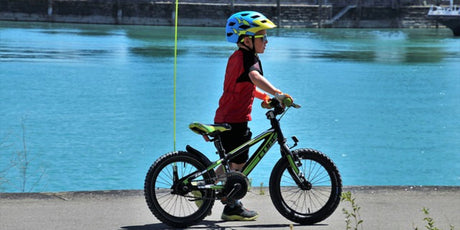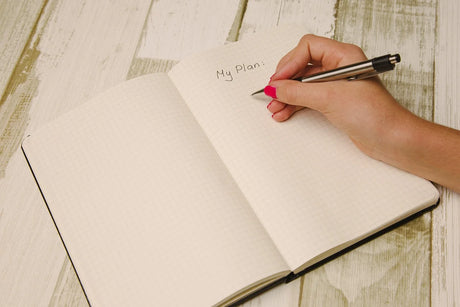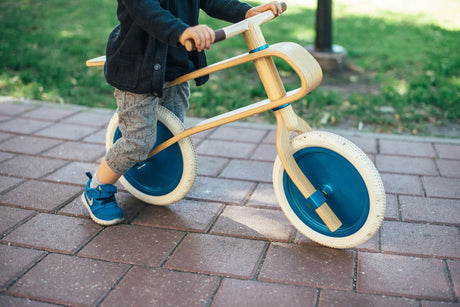Welcome to our comprehensive guide designed to help new parents navigate the financial aspects of preparing for a baby. Having a baby is one of life's most magical experiences, but it can also introduce a new world of budget responsibility and planning . In this article, we aim to address some of the most pressing questions new parents face as they prepare for this significant life change. We will explore effective strategies to manage expenses without compromising the quality or safety of baby and children's equipment.
Specifically, we will answer three key questions that often weigh on expectant parents' minds:
- How can you save money when it comes to getting essential baby gear?
- What are the comprehensive costs that parents need to consider when budgeting for baby and children's gear?
- What are some common budgeting mistakes made by first-time parents and how can they be avoided?
In this guide, we'll highlight how to manage your money smartly while ensuring your child has everything they need. From considering the benefits of renting baby gear instead of buying it, to identifying must-have items, to avoiding common spending traps, this article will be your guide to smart budgeting. With these tips and insights, you can confidently prepare for your baby's arrival and the financial responsibilities that come with it.
The high cost of ownership of baby equipment
Welcoming a new member to the family is an exciting and life-changing experience. However, the joy of becoming a parent often comes with a significant financial consideration. The cost of newborn essentials can be quite high, as shown in "Newborn Starter Kit," an illustration highlighting the typical items and their prices. Some of the key necessities include:- Pram: A must for mobility, costs around SEK 15,000.
- Car seat: Mandatory for car journeys, with prices from SEK 3,400.
- Furniture for children's rooms: Necessary for a child's room, varies from 11,000 to 22,000 SEK.
- Books and toys: Important for development and entertainment, approximately SEK 3,500.
- Breast pump and bottle sterilizer: Necessary for feeding, around SEK 2,000.
- Miscellaneous items: Such as diapers and clothes, starting at SEK 5,500.

The range of baby gear on the market is both impressive and overwhelming. From essential strollers, car seats, and carriers to specialty gear like diaper bags and seasonal items like jogging strollers or strollers with skis, each item serves a unique purpose in the diverse needs of parenthood. However, with uniqueness comes a price tag, and parents often find themselves struggling with the cumulative costs of purchasing these items.
Surprised by your newborn's rapid growth?
Babies grow quickly, passing developmental milestones fast enough to surprise parents. The need for different types of equipment at different stages is not just a matter of preference but a practical necessity. Newborns require different support than infants, and as they become toddlers, their needs evolve again. Parents are faced with the task of providing their children with the tools they need to thrive, adapt and grow. The challenge for parents is to provide the right equipment at the right time to ensure the child's well-being and safety. Imagine investing in a stroller suitable for a newborn, only to find it inadequate when your child starts walking. This ongoing cycle of purchase, growth and replacement puts significant pressure on the family budget , often leading parents to seek more sustainable and cost-effective alternatives.
The car seat's journey for children?
For newborns, an infant carrier is essential, it supports them when they are most vulnerable. By the time they reach 6-9 Months, transition to a rear-facing car seat to accommodate their increased size and support needs. The journey continues into toddlerhood, at 3 years old, a sturdier extended rear-facing car seat is necessary to accommodate their continued growth while maximizing safety. When they become preschoolers around age 4, parents often switch to a swivel car seat, which offers convenience and continues to ensure safety. As they enter later childhood years, from age 5 onwards, a high-back car seat provides the necessary support until they are ready, usually at age 12, to use the car's standard seat belt.
This progression—from infant carrier to high-back car seat—demonstrates the dynamics of a child's needs. For parents, the challenge is to provide the right type of car seat at every step, balancing the imperative of safety with the practicalities of ever-changing requirements. Constantly purchasing new equipment for each phase can strain finances, prompting maNew to seek sustainable and cost-effective alternatives to buying outright, such as equipment rental services.

Cost savings through rental services
Entering the world of baby equipment rental services not only represents a paradigm shift in parenting but also unfolds a world of tangible financial savings. Let's break down the economics of renting baby gear and show the financial benefits that make this trend a game-changer for budget-conscious parents.
Quality products for everyone
Investing in premium baby gear is often expensive at first. By using rental services, parents can get access to high-quality equipment without experiencing significant upfront costs. This is particularly beneficial for items such as premium strollers and car seats such as Bugaboo, Thule or Axkid, allowing parents to provide their children with the best in safety and comfort without sacrificing their financial stability.
Rent vs. buy
To truly understand the cost-saving effectiveness of baby equipment rental services, a comparison with traditional ownership is essential. Take a car seat for example – a basic item in a parent's arsenal. Buying a child car seat involves not only the initial purchase cost, but also the long-term expenses of maintenance, repairs and potential replacement as the child grows. Renting, on the other hand, offers a cost-effective alternative, allowing parents to pay only for the time of use, eliminating unnecessary long-term commitments and expenses.
Cost comparison of the example Bugaboo Fox 3 stroller
To fully understand the cost-saving potential of baby equipment rental services versus direct purchase, consider this head-to-head comparison. For the Bugaboo Fox 3 stroller, a purchase costs SEK 14,500, while renting the same item for 18 Months amounts to SEK 7,700, which leads to a significant saving of SEK 6,800. Likewise, the Axkid Modukid infant car seat has a purchase price of SEK 3,400, but can be rented for just SEK 1,400 over 12 Months , saving parents SEK 2,000. These examples highlight the financial benefits of renting, providing a flexible and economical solution for parents.
It is not only about the cost, but also about the comfort
By renting, they can avoid upfront costs, long-term maintenance and the potential need to replace items as their children grow, making it an attractive option for cost-conscious families.

Consider seasonal products
The seasonal or temporary nature of some baby equipment needs presents a unique financial challenge for parents. Consider the scenario of a family planning a winter vacation and needing a specialized stroller with skis. Buying such an item for a temporary seasonal need can be impractical and costly. Baby equipment rental services step in as the perfect solution, enabling parents to secure necessary equipment for the time needed, ensuring that the baby's experience is enhanced while maintaining financial responsibility.
Common budgeting mistakes and budgeting tips for first-time parents
For new parents, preparing for a baby means trying to plan for every conceivable scenario. They often seek a lot of advice, make detailed lists, and buy things they've been told are must-haves, all to make sure they're ready for aNewthing their child might need.
But despite all this preparation , every child is different . What works for one child may not be right for another. So parents can stop with things their kids don't like or use. In retrospect, they may wish they had chosen different items if they had known what their child would really like or need.
That being said, here are some strategic budgeting tips that can help:
- Prioritize needs over wants: Focus on what the baby really needs in the first few Months—such as diapers, a safe place to sleep, a car seat, and clothes. The latest gadgets or trendiest toys can wait.
- Create a baby budget : Before the baby arrives, create a budget specifically for baby-related expenses.
- Consider renting instead of buying : Since babies quickly outgrow maNew items, renting can be a smart financial move. It allows you to use high-quality, expensive products for a fraction of the purchase price.
- Buy used : MaNew baby items are used for such a short period of time that used items are often almost new. Clothes, toys and even furniture can be bought for a fraction of the cost.
- Invest in step-up products : Some products are designed to grow with your child, such as cribs that convert to toddler beds.
- Borrow what you can: Family and friends may have baby equipment they no longer use. Borrowing can save you a lot of money, and since these items are often used for a short period of time, they are usually well maintained.
- Resist impulse buying : It's easy to get excited about cute baby items. Stick to your list and budget to avoid unnecessary purchases.
- Research before you buy : Look at reviews and product recalls to ensure you're buying safe, reliable products. This can prevent you from having to buy replacements later.
- Plan for the long term: Consider starting a savings account for future expenses such as childcare, education and health care.
- Prepare for hidden costs: There will always be unexpected expenses. Set aside a little extra in your budget for emergencies or unexpected expenses.
Saving money in a nutshell
In conclusion, our goal with this article has been to offer you practical advice for budget-friendly parenting . Here's a quick summary:
First-time parents can save money on strollers and baby gear by considering rentals or second-hand purchases and focusing on customizable, multi-step products. It is important to budget not only for immediate necessities but also for future expenses, while keeping an eye out for hidden expenses. A common mistake for new parents is to buy an excess of items in preparation for each scenario, which often leads to unused, unnecessary expenses. By prioritizing what your child really needs, you can avoid these budgeting risks.
As we conclude this exploration, the invitation extends to all parents – consider the option of renting as an affordable and practical choice. Take the chance to reduce the financial burden and stress associated with buying baby gear, allowing you to focus on what really matters – your baby's well-being and happiness. The era of renting baby equipment is not just a trend, it is a transformative choice that empowers parents to navigate the complexities of parenthood with both financial stability and peace of mind.
Curious about where to start your journey in the world of baby equipment rental? Visit our product range at parently.se .






